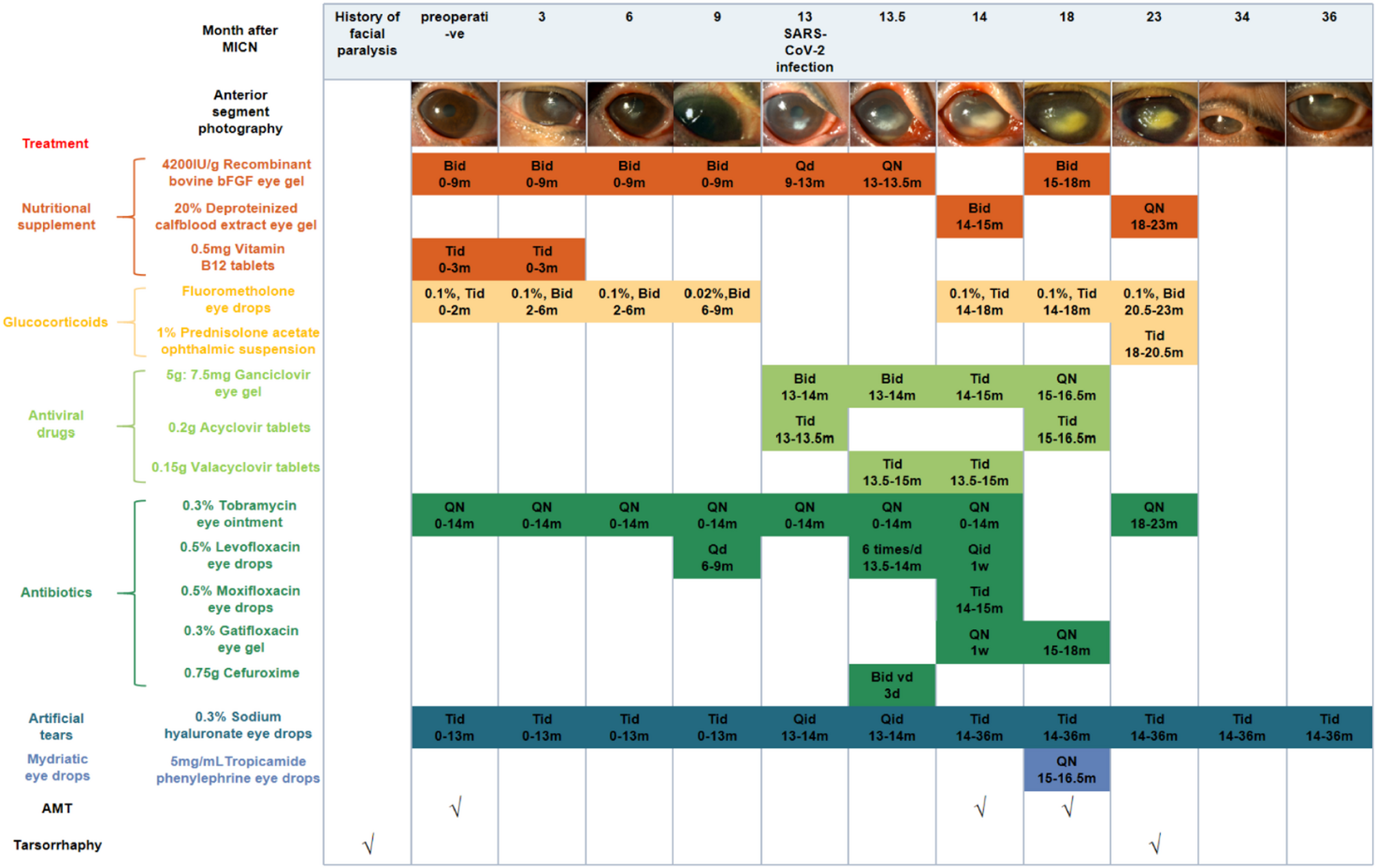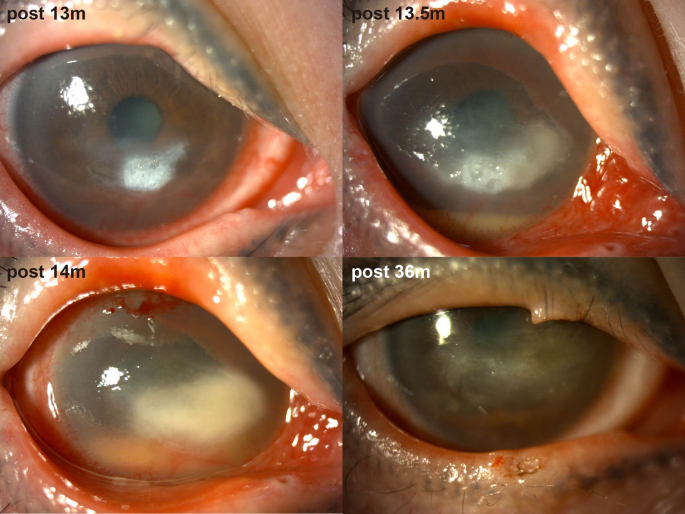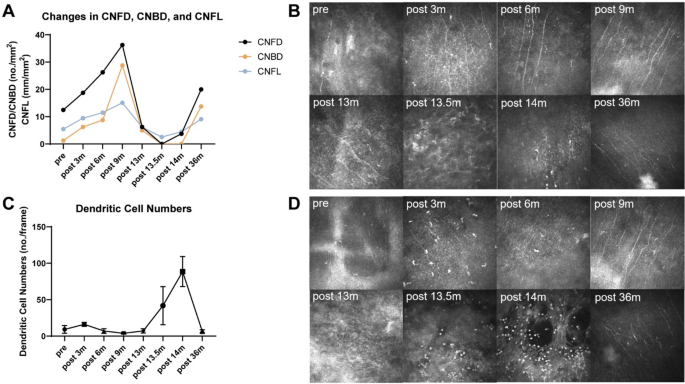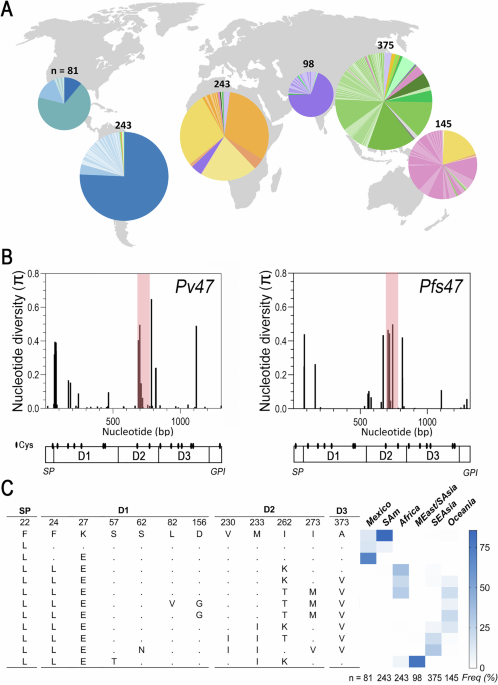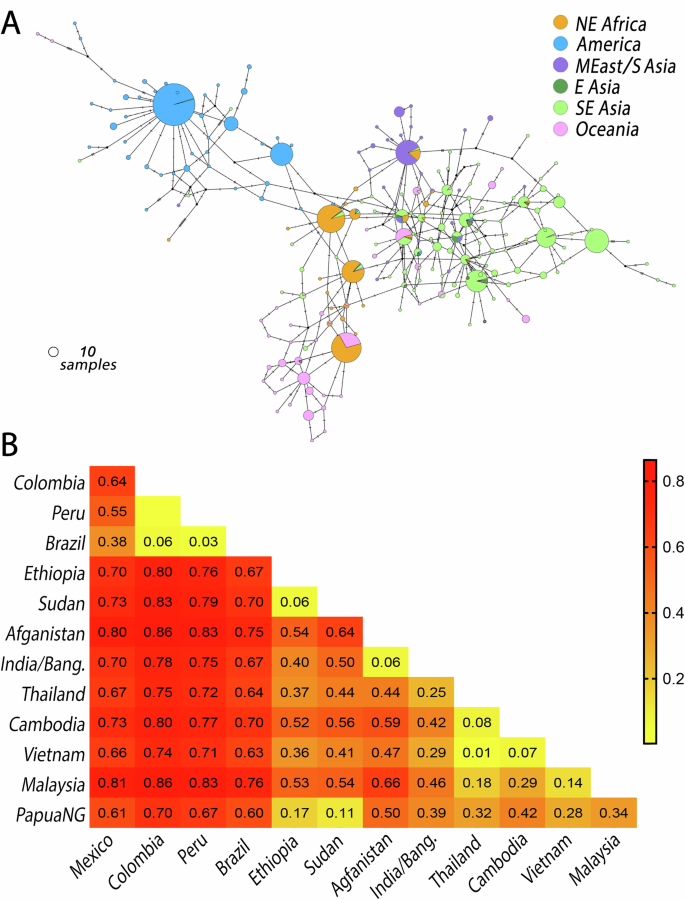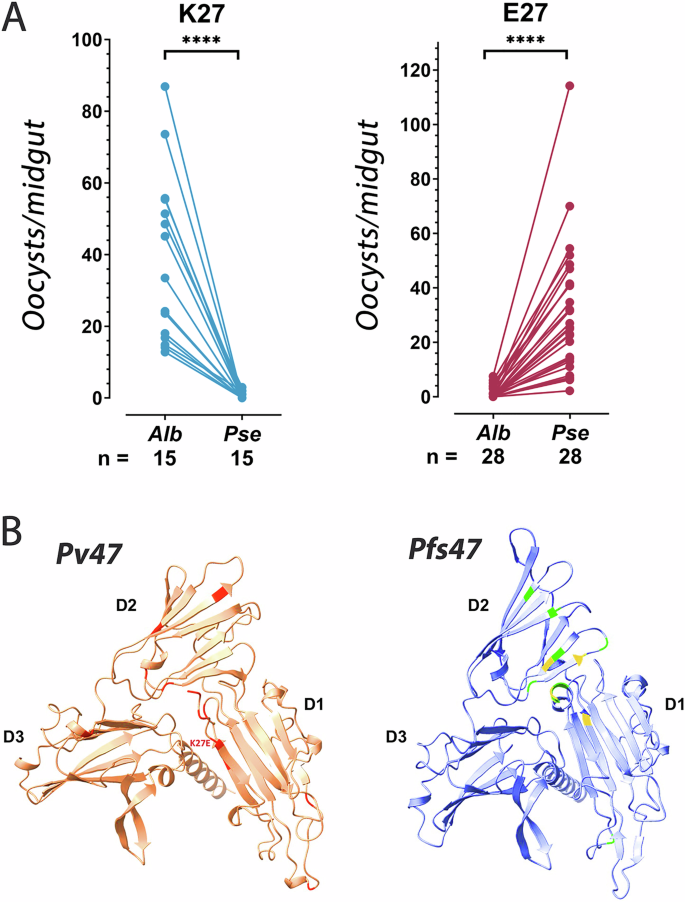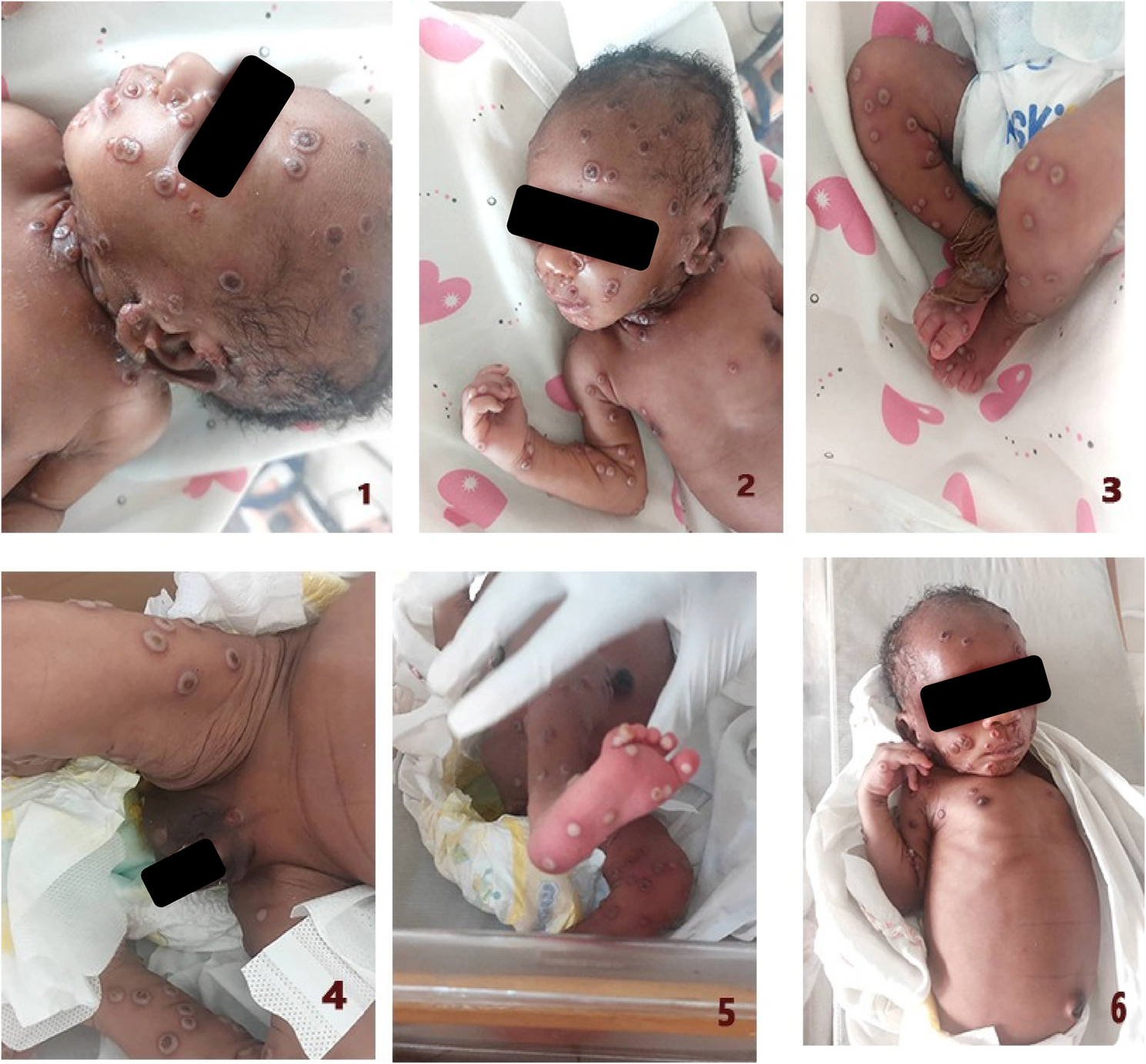Introduction
Congenital heart disease (CHD) is a common congenital malformation caused by abnormal development of the heart and large blood vessels during embryonic development, accounting for about one-third of common birth defects.1 In recent years, the incidence and mortality of CHD have been increasing globally.2,3 The number of children with CHD in the world accounts for 0.8%~1% of live births, and the incidence of CHD in China is 0.6%~ 0.9%.4 CHD not only causes pain to the child, but also brings a serious economic burden to the family and society.5
Due to its complex pathogenesis, CHD presents a variety of disease classification. According to the presence or absence of blood shunt between the left and right sides of the heart and the great vessels, it can be divided into left-to-right shunts types (such as atrial septal defect (ASD), ventricular septal defect (VSD), patent ductus arteriosus (PDA)),6 right-to-left shunts types (such as tetralogy of Fallot (TOF), and transposition of the great arteries),7 and non-shunt type (such as pulmonary artery stenosis (PAS), and aortic coarctation).8 Different types of CHD differ significantly in anatomical structure, hemodynamic changes and clinical manifestations, which brings great challenges to the diagnosis and treatment of the disease.9,10 Left-to-right shunt CHD is a common one in children. One of the common characteristics of this disease is the presence of abnormal channel between the left and right chambers of the heart, or between the aorta and the pulmonary artery. It causes blood to shunt from the higher pressure left cardiac system to the lower pressure right cardiac system.6,11 Left-to-right shunt CHD accounts for approximately 50% to 60% of all CHDs, and 0.3‰ to 1.0‰ among newborns.12 It is a key type of pediatric cardiovascular disease that requires priority intervention.
If left-to-right shunt CHD is not timely and effective treatment, abnormal hemodynamic conditions will continue to affect the development of the heart and other systems throughout the body, and even endanger life.13 Long-term left-to-right shunt will cause excessive load on the right heart system, gradually leading to right ventricular hypertrophy, and subsequently affecting the pumping function of the heart.14 At the same time, the lungs remain in a state of congestion for a long time, which is prone to causing repeated pulmonary infections and hindering the growth and development of the child.15 Surgical treatment is currently the main method for treating left-to-right shunt CHD in clinical practice.16 Surgical treatment can correct the anatomical deformity of the heart and restore normal hemodynamic function, effectively improving the cardiac function of the children.17–19
The prognosis of left-to-right shunt CHD in children is influenced by many factors.20 Some children still face the problem of prolonged hospital stay after surgery. It not only has a negative impact on the physical and mental health of the children themselves, but also brings a burden to the families of the children. Prolonged hospital stay is likely to cause anxiety, depression and other psychological problems. Prolonged hospital stay directly leads to an increase in medical costs and increases family economic pressure. In addition, from the perspective of medical resources, the longer hospital stay will reduce the utilization efficiency of medical resources.21,22 Most existing studies focus on the analysis of a single factor or are specific to a certain disease type (such as VSD), lacking a comprehensive assessment of the overall population with left-to-right shunt CHD. Children and adolescents are in a special stage of growth and development, and their cardiac and pulmonary function reserves, immune status, and postoperative compensatory ability differ significantly from those of adults. Currently, systematic research on this specific population is still scarce, and the interaction and priority relationship among various factors have not been clarified, resulting in difficulties for clinical practice in formulating precise risk prediction models and intervention strategies. It is of great practical significance to explore the influencing factors of prolonged hospital stay after surgery therapy for children and adolescents with CHD for optimizing interventional treatment, shortening hospital stay, improving medical service quality, and rationally allocating medical resources.
Materials and Methods
Study Cohort
A total of 463 children and adolescents with left-to-right shunt CHD who received surgery therapy in Meizhou People’s Hospital from December 2016 to February 2025 were selected. The inclusion criteria of patients were as follows: (1) patients diagnosed with ASD, VSD, PDA by echocardiography (with or without other simple or complex heart malformations); (2) children and adolescents aged between 0–18 years old; (3) patients who meet the indications for surgery therapy for CHD; and (4) had complete clinical data. Exclusion criteria: (1) preoperative patients with acute infection; (2) patients with significantly impaired or defective function of other organs; and (3) clinical records incomplete. This study was approved by the Human Ethics Committees of the Meizhou People’s Hospital.
Data Collection
The collected clinical data included gender, types of CHDs (ASD, VSD, PDA), the results of echocardiography (such as tricuspid insufficiency, mitral insufficiency, pulmonary insufficiency, and pulmonary hypertension), invasive mechanical ventilation, blood transfusion, tracheal intubation, intraoperative blood loss (mL), and length of hospital stay (days). In the study, compound types CHD was defined as patients with more than one type of CHD at the same time. The threshold for prolonged hospital stay was defined based on the third quartile (75th percentile) of length of hospital stay for all patients.
The definitions of tricuspid insufficiency, mitral insufficiency, pulmonary insufficiency, and pulmonary hypertension:
- Tricuspid insufficiency refers to the inability of the tricuspid to close completely during the cardiac contraction phase, resulting in abnormal valve function and blood flowing retrogradely from the right ventricle into the right atrium.23 An echocardiogram examination revealed abnormal regurgitation bands at the tricuspid valve orifice during the contraction phase.
- Mitral insufficiency is a pathological condition where the structure and function of the mitral valve are abnormal, resulting in the inability of the mitral valve orifice to close completely during the cardiac contraction phase, causing blood from the left ventricle to flow back into the left atrium.24 The diagnosis is based on the echocardiographic finding of a backflow signal at the mitral valve orifice during systole.
- Pulmonary insufficiency refers to a valve disorder where the pulmonary valve fails to close completely during diastole, causing blood to flow back from the pulmonary artery into the right ventricle.25 The echocardiogram shows a retrograde flow beam at the pulmonary valve orifice during diastole.
- Pulmonary hypertension refers to an increase in the mean pulmonary artery pressure (mPAP) of ≥20 mmHg at rest.26 The degree of pulmonary hypertension is mainly determined by the pulmonary artery systolic pressure (PASP) value measured through cardiac ultrasound examination: ①mild pulmonary hypertension: PASP is 30–49 mmHg, the pulmonary artery pressure is slightly elevated and usually has not yet caused significant adverse effects on cardiac function and hemodynamics; ②moderate pulmonary hypertension: PASP is 50–79 mmHg, the pulmonary artery pressure is moderately elevated and may gradually affect the pumping function of the heart, leading to an increase in the load on the right ventricle; ③severe pulmonary hypertension: PASP is ≥80 mmHg, the pulmonary artery pressure is significantly elevated, severely increasing the burden on the right ventricle and may exhibit symptoms such as shortness of breath, chest tightness, and edema.
Data Processing and Statistical Analysis
Data analysis was performed using SPSS statistical software version 26.0 (IBM Inc., USA). For variables with a missing value proportion less than 5%, the cases with missing values are directly eliminated. For variables with a missing value proportion between 5% and 20%, the multiple imputation method is used for processing. The continuous data that met the normal distribution were expressed as means ± standard deviations and compared using the t-test; the data not meeting the normal distribution were expressed as medians (25th and 75th percentiles) and compared using the Mann–Whitney U-test. Categorical variables were compared using the χ2 test or Fisher’s exact test, between CHD patients with prolonged hospital stay and non-prolonged hospital stay. Logistic regression analysis was used to determine the factors influencing prolonged hospital stay for surgical treatment of left-to-right shunt CHD in children and adolescents.
Results
Clinical Features of the Patients with CHD
There were 227 (49.0%) male patients and 236 (51.0%) female patients. The number of ASD, VSD, PDA patients was 155 (33.5%), 128 (27.6%), 62 (13.4%), respectively, and 118 (25.5%) patients with compound types. There were 177 (38.2%), 18 (3.9%)), and 1 (0.2%) patients with mild, moderate, and severe tricuspid insufficiency, respectively; 84 (18.1%), 14 (3.0%), and 3 (0.6%) patients with mild, moderate, and severe mitral insufficiency, respectively; 11 (2.4%) patients with pulmonary insufficiency; 64 (13.8%), 30 (6.5%), and 13 (2.8%) patients with mild, moderate, and severe pulmonary hypertension, respectively. The proportion of patients treated with invasive mechanical ventilation, blood transfusion, and tracheal intubation was 49.0% (227/463), 49.0% (227/463), and 41.0% (190/463), respectively (Table 1). The mean length of hospital stay was 13.00 (7.00, 18.00) days (Table 1).
|
Table 1 The Clinical Features of the Patients with Congenital Heart Disease
|
Comparison of the Clinical Characteristics of Congenital Heart Disease Patients with Prolonged Hospital Stay and Non-Prolonged Hospital Stay in Patients Treated with Surgical Treatment
In this study, 330 (71.3%) patients with non-prolonged hospital stay (<18.0 days) and 133 (28.7%) patients with prolonged hospital stay (≥18.0 days). There were statistically significant differences in the distributions of types of CHD (χ2=67.959, p<0.001), severity of mitral insufficiency (χ2=14.171, p=0.002), and severity of pulmonary hypertension (χ2=49.611, p<0.001) between CHD patients with prolonged hospital stay and non-prolonged hospital stay. The proportion of patients with prolonged hospital stay who treated with invasive mechanical ventilation (86.5% vs 33.9%, p<0.001), blood transfusion (88.7% vs 33.0%, p<0.001), and tracheal intubation (70.7% vs 29.1%, p<0.001) were higher than those of patients with non-prolonged hospital stay, respectively (Table 2).
 |
Table 2 Comparison of the Clinical Characteristics of Congenital Heart Disease Patients with Prolonged Hospital Stay and Non-Prolonged Hospital Stay in Patients Treated with Surgical Treatment
|
Comparison of the Clinical Characteristics of CHD Patients with Prolonged Hospital Stay and Non-Prolonged Hospital Stay in Patients Treated with Blood Transfusion
In patients treated with blood transfusion (n=227), there were 109 patients with non-prolonged hospital stay and 118 patients with prolonged hospital stay. There were statistically significant differences in the distributions of types of CHD (χ2=12.932, p=0.004), and pulmonary hypertension (χ2=13.253, p<0.001) between CHD patients with prolonged and non-prolonged hospital stay. There were no statistically significant differences in the proportions of tricuspid insufficiency, mitral insufficiency, pulmonary insufficiency, invasive mechanical ventilation, and tracheal intubation (Table 3).
 |
Table 3 Comparison of the Clinical Characteristics of Patients with Prolonged Hospital Stay and Non-Prolonged Hospital Stay in CHD Patients Treated with Blood Transfusion
|
Logistic Regression Analysis of Risk Factors Associated with Prolonged Hospital Stay
The results of univariate analysis indicated that male (odds ratio (OR): 1.650, 95% confidence interval (CI): 1.099–2.478, p=0.016), compound types CHD (OR: 5.553, 95% CI: 3.533–8.730, p<0.001), mitral insufficiency (OR: 1.897, 95% CI: 1.193–3.014, p=0.007), pulmonary hypertension (OR: 3.770, 95% CI: 2.392–5.940, p<0.001), invasive mechanical ventilation (OR: 12.436, 95% CI: 7.199–21.480, p<0.001), blood transfusion (OR: 15.950, 95% CI: 8.893–28.607, p<0.001), and tracheal intubation (OR: 5.875, 95% CI: 3.774–9.145, p<0.001) were associated with prolonged hospital stay (Table 4).
 |
Table 4 Logistic Regression Analysis of Risk Factors Associated with Prolonged Hospital Stay
|
In multivariate logistic regression analysis, male (OR: 2.137, 95% CI: 1.278–3.574, p=0.004), compound types CHD (OR: 2.021, 95% CI: 1.178–3.469, p=0.011), pulmonary hypertension (OR: 3.179, 95% CI: 1.537–6.572, p=0.002), invasive mechanical ventilation (OR: 4.069, 95% CI: 1.567–10.564, p=0.004), and blood transfusion (OR: 5.128, 95% CI: 2.421–10.862, p<0.001) were independently associated with prolonged hospital stay (Table 4).
Discussion
The study of the factors influencing the prolonged hospital stay in children with left-to-right shunt CHD has important clinical significance in many aspects, such as optimizing the allocation of medical resources, reducing medical costs, improving treatment plans and improving the prognosis of children. This study found that male, compound types CHD, pulmonary hypertension, invasive mechanical ventilation, and blood transfusion were independently associated with prolonged hospital stay in CHD patients.
Studies have shown that complex CHDs, such as TOF and complete transposition of great arteries, have extremely complex anatomical structure, difficult operation, slow postoperative recovery, and significantly longer hospital stay than simple CHDs, such as atrial septal defect and ventricular septal defect repair.27,28 This is because the operation of complex CHDs requires more delicate operation, long cardiopulmonary bypass time, great damage to the body, and postoperative complications are prone to occur.29,30 In addition, the combination of other systemic diseases before surgery (such as lung infection, liver and kidney insufficiency), will reduce the patient’s tolerance to surgery, increase the difficulty of postoperative recovery, and lead to prolonged hospital stay.31
CHD patients often have abnormal cardiac structure and function, which lead to hemodynamic changes in pulmonary circulation, and then lead to pulmonary hypertension.32 The persistence of pulmonary hypertension can seriously affect the recovery of cardiopulmonary function.33 On the one hand, pulmonary hypertension increases right cardiac afterload, leading to right cardiac insufficiency.34 The right ventricle needs to overcome higher pressure to pump blood into the pulmonary circulation, which makes the heart muscle do more work, energy consumption is intensified, and it is easy to cause right heart failure.35 Some studies have shown that the incidence of postoperative right heart failure in CHD patients with pulmonary hypertension is significantly higher than that in patients without pulmonary hypertension, and right heart failure will further lead to systemic circulation congestion,36 liver enlargement,37 lower limb edema38 and other symptoms, which seriously affect the recovery process of patients and prolong hospital stay. On the other hand, pulmonary vascular remodeling caused by pulmonary hypertension increases pulmonary vascular resistance and impairs gas exchange function.39 Pulmonary circulation blood flow is reduced, oxygen dispersion disorders, resulting in poor oxygenation of patients, the body is in a state of hypoxia.40 This hypoxic environment will not only affect the function of the heart, liver, kidney and other important organs, but also inhibit wound healing and tissue repair, further delaying the recovery of patients, resulting in prolonged hospital stay.41,42
There was a significant correlation between mechanical ventilation and length of stay. A long period of mechanical ventilation means that the patient’s respiratory function is slow to recover, and it is not possible to breathe independently from the ventilator as soon as possible.43 On the one hand, this may be due to the serious impact of the operation itself on the cardiopulmonary function. After the reconstruction of the heart structure, it takes a long time to restore the pumping function, which in turn affects the pulmonary circulation and makes it difficult to stabilize the respiratory function in the short term.44 On the other hand, patients’ own basic conditions, such as infants’ imperfect respiratory system development, higher dependence on mechanical ventilation, and more difficult to take offline, lead to a significant extension of hospital stay.
Blood transfusion, as an important therapeutic method for correcting anemia and maintaining circulatory stability after surgery in CHD, has a complex and dual impact on the cardiac function of children. On the one hand, anemia can lead to a reduction in oxygen supply to the myocardium, increasing the burden on the myocardium’s work.45 Especially for children with left-to-right shunt CHD, there may already be varying degrees of increased ventricular volume load before the operation.46 At this time, reasonable blood transfusion can raise the hemoglobin level, enhance the blood’s oxygen-carrying capacity, improve myocardial oxygen supply, thereby maintaining myocardial contractility and cardiac output.47 On the other hand, the potential negative impact of blood transfusion on cardiac function cannot be ignored. Blood transfusion may alter the rheological properties of blood. Transfused red blood cells may lead to increased blood viscosity, increase the heart’s pumping burden, and affect the recovery of heart function.48 Especially for some CHD patients with weak heart function itself, this effect is more obvious. In addition, blood transfusion may interfere with cardiac tissue repair and regeneration by affecting the body’s inflammatory response and oxidative stress state.49 Bioactive substances contained in blood products may activate inflammatory cells, trigger an inflammatory cascade response, damage heart microvascular endothelial cells, and affect myocardial perfusion.50 Therefore, blood transfusion has a “double-edged sword” effect on the postoperative cardiac function of children and adolescents with left-to-right shunt congenital heart disease. In clinical decision-making, it is necessary to dynamically monitor the hemoglobin level, cardiac function indicators, and circulatory volume status of the children. A personalized balance point needs to be found between correcting anemia and avoiding volume overload and inflammatory damage, in order to maximize the protective effect of blood transfusion on cardiac function.
In addition, Martins RS et al found that longer aortic cross clamping time and postoperative kidney injury are factors for prolonged length of stay in adults with CHD after surgery.51 Martins RS et al found that length of some procedures during surgery, and postoperative kidney injury were associated with longer intensive care unit (ICU) stay in adults with CHD after surgery.52 Huang et al found that malnutrition was associated with prolonged hospital stay.53 Several studies have also explored predictive markers for longer hospital stays in patients with CHD. Troponin T,54 N-terminal pro-brain natriuretic peptide (NT-proBNP),55,56 and preoperative albumin level57 were potential markers of length of ICU stay in CHD children undergoing surgery. PErioperative Adult Congenital Heart disease (PEACH) score was a predictor of prolonged ICU stay in adults with TOF.58
This study found some valuable information about the factors that influence the length of hospital stay after surgical treatment in patients with CHD, it still has several limitations. First, the types and severity of CHD are diverse. Due to the limited number of cases included, this study could not compare CHD patients with different diseases, different age groups and different clinical manifestations. Second, it a single-center retrospective study that lacks more comprehensive variable inclusion and long-term follow-up data. Third, this study only analyzed the influencing factors of longer hospital stay in CHD patients, and did not evaluate the predictors of longer hospital stay in CHD patients.54 In the future, we expect to include more variables for more adequate preoperative, intraoperative and long-term follow-up to evaluate the factors that influence the short- and long-term prognosis of CHD after surgical treatment.
Conclusion
Male, compound types CHD, pulmonary hypertension, invasive mechanical ventilation, and blood transfusion were independently associated with prolonged hospital stay in CHD patients. Based on this conclusion, in order to shorten the hospital stay of children and adolescents with left-to-right shunt CHD who undergo surgical treatment, in clinical practice, a comprehensive assessment of the patient’s condition should be conducted before the surgery, and the surgical method and timing should be scientifically selected. Of course, the indicators revealed by this information related to longer hospital stay in CHD patients need to be further explored in prospective cohort studies.
Data Sharing Statement
The data that support the findings of this study are available from the corresponding author upon reasonable request.
Ethics Approval
The study was performed under the guidance of the Declaration of Helsinki and approved by the Ethics Committee of Medicine, Meizhou People’s Hospital, Meizhou Academy of Medical Sciences (Clearance No.: 2024-C-60). The parents or legal guardians of all neonates signed informed consent forms.
Acknowledgments
The author would like to thank other colleagues whom were not listed in the authorship of Department of Pediatrics, Meizhou People’s Hospital, Meizhou Academy of Medical Sciences for their helpful comments on the manuscript.
Author Contributions
All authors made a significant contribution to the work reported, whether that is in the conception, study design, execution, acquisition of data, analysis and interpretation, or in all these areas; took part in drafting, revising or critically reviewing the article; gave final approval of the version to be published; have agreed on the journal to which the article has been submitted; and agree to be accountable for all aspects of the work.
Funding
This study was supported by the Science and Technology Program of Meizhou (Grant No. 2019B0202001).
Disclosure
The authors declare that they have no competing interests in this work.
References
1. Khan MH, Ahsan A, Mehta F. et al. Precision Medicine in Congenital Heart Disease, Rheumatic Heart Disease, and Kawasaki Disease of Children: an Overview of Literature. Cardiol Rev. 2024. doi:10.1097/CRD.0000000000000709
2. Wu W, He J, Shao X. Incidence and mortality trend of congenital heart disease at the global, regional, and national level, 1990-2017. Medicine. 2020;99(23):e20593. doi:10.1097/MD.0000000000020593
3. Su Z, Zou Z, Hay SI, et al. Global, regional, and national time trends in mortality for congenital heart disease, 1990-2019: an age-period-cohort analysis for the Global Burden of Disease 2019 study. EClinicalMedicine. 2022;43:101249. doi:10.1016/j.eclinm.2021.101249
4. Kang L, Cao G, Jing W, Liu J, Liu M. Global, regional, and national incidence and mortality of congenital birth defects from 1990 to 2019. Eur J Pediatr. 2023;182(4):1781–1792. doi:10.1007/s00431-023-04865-w
5. Zhang Y, Zhou H, Bai Y, et al. Families under pressure: a qualitative study of stressors in families of children with congenital heart disease. Stress Health. 2023;39(5):989–999. doi:10.1002/smi.3240
6. Burkett DA. Common Left-to-Right Shunts. Pediatr Clin North Am. 2020;67(5):821–842. doi:10.1016/j.pcl.2020.06.007
7. DeVore GR, Cuneo B, Sklansky M, Satou G. Abnormalities of the Width of the Four-Chamber View and the Area, Length, and Width of the Ventricles to Identify Fetuses at High-Risk for D-Transposition of the Great Arteries and Tetralogy of Fallot. J Ultrasound Med. 2023;42(3):637–646. doi:10.1002/jum.16060
8. Berman DP, Morray B, Sullivan P, Shahanavaz S, Zahn EM. Results of the multicenter early feasibility study (EFS) of the Renata Minima stent as treatment for branch pulmonary artery stenosis and coarctation of aorta in infants. Catheter Cardiovasc Interv. 2024;104(1):61–70. doi:10.1002/ccd.31074
9. Wilson S, Cromb D, Bonthrone AF. Structural Covariance Networks in the Fetal Brain Reveal Altered Neurodevelopment for Specific Subtypes of Congenital Heart Disease. J Am Heart Assoc. 2024;13(21):e035880. doi:10.1161/JAHA.124.035880
10. Papunen I, Ylänen K, Lundqvist O, et al. Automated analysis of heart sound signals in screening for structural heart disease in children. Eur J Pediatr. 2024;183(11):4951–4958. doi:10.1007/s00431-024-05773-3
11. Ferrero P, Constantine A, Chessa M, Dimopoulos K. Pulmonary arterial hypertension related to congenital heart disease with a left-to-right shunt: phenotypic spectrum and approach to management. Front Cardiovasc Med. 2024;11:1360555. doi:10.3389/fcvm.2024.1360555
12. Rahayuningsih SE, Budi Kuswiyanto R, Reviyani Suryaningrat F, Nataprawira HM, Sukadi A. Left to right shunt congenital heart disease as a risk factor of recurrent pneumonia in under five-year-old children: a single centre experience in Bandung Indonesia. Med Glas. 2021;18(1):33–37. doi:10.17392/1196-21
13. Palladino-Davis AG, Davis CS. Outcomes of infants and children undergoing surgical repair of ventricular septal defect: a review of the literature and implications for research with an emphasis on pulmonary artery hypertension. Cardiol Young. 2020;30(6):799–806. doi:10.1017/S1047951120001146
14. Aggarwal S, Kadiu G, Natarajan G. Effect of Transcatheter Closure of the Ductus Arteriosus on Right Ventricular Function in Preterm Neonates. Pediatr Cardiol. 2025. doi:10.1007/s00246-025-03894-6
15. Jat NK, Bhagwani DK, Bhutani N, Sharma U, Sharma R, Gupta R. Assessment of the prevalence of congenital heart disease in children with pneumonia in tertiary care hospital: a cross-sectional study. Ann Med Surg Lond. 2022;73:103111. doi:10.1016/j.amsu.2021.103111
16. Zheng G, Wu J, Chen P, et al. Characteristics of in-hospital mortality of congenital heart disease (CHD) after surgical treatment in children from 2005 to 2017: a single-center experience. BMC Pediatr. 2021;21(1):521. doi:10.1186/s12887-021-02935-2
17. Kaeslin R, Latal B, Mitteregger E. A systematic review of early motor interventions for infants with congenital heart disease and open-heart surgery. Syst Rev. 2023;12(1):149. doi:10.1186/s13643-023-02320-3
18. Thambo JB. Transcatheter interventions in congenital heart disease: we must have the means to fulfil our ambitions. Arch Cardiovasc Dis. 2020;113(2):89–91. doi:10.1016/j.acvd.2019.12.001
19. Linnane N, Kenny DP, Hijazi ZM. Congenital heart disease: addressing the need for novel lower-risk percutaneous interventional strategies. Expert Rev Cardiovasc Ther. 2023;21(5):329–336. doi:10.1080/14779072.2023.2208862
20. Nawaytou H, Lakkaraju R, Stevens L, et al. Management of pulmonary vascular disease associated with congenital left-to-right shunts: a single-center experience. J Thorac Cardiovasc Surg. 2025;169(1):231–241.e232. doi:10.1016/j.jtcvs.2024.05.007
21. Green MD, Parker DM, Everett AD, et al. Cardiac Biomarkers Associated With Hospital Length of Stay After Pediatric Congenital Heart Surgery. Ann Thorac Surg. 2021;112(2):632–637. doi:10.1016/j.athoracsur.2020.06.059
22. Hamilton ARL, Yuki K, Fynn-Thompson F, DiNardo JA, Odegard KC. Perioperative Outcomes in Congenital Heart Disease: a Review of Clinical Factors Associated With Prolonged Ventilation and Length of Stay in Four Common CHD Operations. J Cardiothorac Vasc Anesth. 2025;39(3):692–701. doi:10.1053/j.jvca.2024.11.008
23. Badano LP, Tomaselli M, Muraru D, Galloo X, Li CHP, Ajmone Marsan N. Advances in the Assessment of Patients With Tricuspid Regurgitation: a State-of-the-Art Review on the Echocardiographic Evaluation Before and After Tricuspid Valve Interventions. J Am Soc Echocardiogr. 2024;37(11):1083–1102. doi:10.1016/j.echo.2024.07.008
24. Harb SC, Griffin BP. Mitral Valve Disease: a Comprehensive Review. Curr Cardiol Rep. 2017;19(8):73. doi:10.1007/s11886-017-0883-5
25. Matoq A, Shahanavaz S. Transcatheter Pulmonary Valve in Congenital Heart Disease. Interv Cardiol Clin. 2024;13(3):369–384. doi:10.1016/j.iccl.2024.03.001
26. Torres-Rojas MB, Cueto-Robledo G, Roldan-Valadez E, et al. Association Between the Degree of Severity of Pulmonary Hypertension With the Presence of Pulmonary Artery Aneurysm: a Brief Updated Review for Clinicians. Curr Probl Cardiol. 2023;48(6):101645. doi:10.1016/j.cpcardiol.2023.101645
27. Han BK, Lesser JR. CT imaging in congenital heart disease: an approach to imaging and interpreting complex lesions after surgical intervention for tetralogy of Fallot, transposition of the great arteries, and single ventricle heart disease. J Cardiovasc Comput Tomogr. 2013;7(6):338–353. doi:10.1016/j.jcct.2013.10.003
28. Lasso-Mendez J, Spence C, Hornberger LK, Sivak A, Davenport MH. Vascular Health in Congenital Heart Disease: a Systematic Review and Meta-Analysis. Can J Cardiol. 2025;41(1):71–86. doi:10.1016/j.cjca.2024.10.021
29. Tsuda T, Kakavand B. Feeding Difficulty and Poor Somatic Growth After Reparative Cardiac Surgery in Infants with Complex Congenital Heart Disease: are We Missing Something Important? J Pediatr. 2022;250:13–15. doi:10.1016/j.jpeds.2022.07.054
30. Mahendran AK, Bussey S, Chang PM. Fluoroscopy-free ablation in congenital heart disease of moderate or great complexity. J Interv Card Electrophysiol. 2022;63(3):611–620. doi:10.1007/s10840-021-01079-8
31. Grundmann S, Kaier K, Maier A, et al. In-hospital outcomes of catheter ablation in atrial arrhythmias: a nationwide analysis of 2,901 patients with adult congenital heart disease compared to 787,995 without. Clin Res Cardiol. 2025;114(4):507–515. doi:10.1007/s00392-025-02614-7
32. Jone PN, Ivy DD, Hauck A, et al. Pulmonary Hypertension in Congenital Heart Disease: a Scientific Statement From the American Heart Association. Circ Heart Fail. 2023;16(7):e00080. doi:10.1161/HHF.0000000000000080
33. Rischard FP, Bernardo RJ. Classification and Predictors of Right Ventricular Functional Recovery in Pulmonary Arterial Hypertension. Circ Heart Fail. 2023;16(10):e010555. doi:10.1161/CIRCHEARTFAILURE.123.010555
34. Latimer K, Layne M, Payne M. Pulmonary Hypertension. Am Fam Physician. 2024;110(2):183–191. PMID: 39172676.
35. Crager SE, Humphreys C. Right Ventricular Failure and Pulmonary Hypertension. Emerg Med Clin North Am. 2022;40(3):519–537. doi:10.1016/j.emc.2022.05.006
36. Naeije R, Richter MJ, Rubin LJ. The physiological basis of pulmonary arterial hypertension. Eur Respir J. 2022;59(6):2102334. doi:10.1183/13993003.02334-2021
37. Ma F, Zhou K, Hua Y, et al. Chronic thromboembolic pulmonary hypertension as the first manifestation of nephrotic syndrome in a 12-year-old child. Medicine. 2018;97(41):e12349. doi:10.1097/MD.0000000000012349
38. Rexiti P, Wutiku M, Wulamu W, Bai F, Cao L. Pulmonary hypertension could be a risk for deep vein thrombosis in lower extremities after joint replacement surgery. Rev Assoc Med Bras. 2019;65(7):946–950. doi:10.1590/1806-9282.65.7.946
39. Deng J. Clinical application of pulmonary vascular resistance in patients with pulmonary arterial hypertension. J Cardiothorac Surg. 2021;16(1):311. doi:10.1186/s13019-021-01696-4
40. Johnson DW, Roy TK, Secomb TW. Analysis of flow resistance in the pulmonary arterial circulation: implications for hypoxic pulmonary vasoconstriction. J Appl Physiol. 2021;131(4):1211–1218. doi:10.1152/japplphysiol.00128.2021
41. Bai Q, Gao Q, Hu F. Reoxygenation Modulates the Adverse Effects of Hypoxia on Wound Repair. Int J Mol Sci. 2022;23(24):15832. doi:10.3390/ijms232415832
42. Han X, Ju LS, Irudayaraj J. Oxygenated Wound Dressings for Hypoxia Mitigation and Enhanced Wound Healing. Mol Pharm. 2023;20(7):3338–3355. doi:10.1021/acs.molpharmaceut.3c00352
43. Geier L, Menzel C, Germund I, Trieschmann U. RACHS-1 score as predictive factor for postoperative ventilation time in children with congenital heart disease. Cardiol Young. 2020;30(2):213–218. doi:10.1017/S1047951120000025
44. Jiang H, Yu X, Zhang L, Wang M. Effects of treprostinil on pulmonary arterial hypertension during surgery for congenital heart disease complicated with severe pulmonary arterial hypertension. Minerva Cardiol Angiol. 2021;69(2):154–160. doi:10.23736/S2724-5683.20.05085-9
45. Cirovic A, Starcevic A, Ivanovski A, Bogicevic D, Orisakwe OE, Cirovic A. Mechanisms Underlying Iron Deficiency-Induced Cardiac Disorders: implications for Treatment. Discov Med. 2025;37(192):31–41. doi:10.24976/Discov.Med.202537192.3
46. Bredy C, Mongeon FP, Leduc L, Dore A, Khairy P. Pregnancy in adults with repaired/unrepaired atrial septal defect. J Thorac Dis. 2018;10(Suppl 24):S2945–s2952. doi:10.21037/jtd.2017.10.130
47. Carson JL, Brooks MM, Chaitman BR, et al. Rationale and design for the myocardial ischemia and transfusion (MINT) randomized clinical trial. Am Heart J. 2023;257:120–129. doi:10.1016/j.ahj.2022.11.015
48. Jain R, Bansal D, Marwaha RK. Hyperleukocytosis: emergency management. Indian J Pediatr. 2013;80(2):144–148. doi:10.1007/s12098-012-0917-3
49. Hatairaktham S, Masaratana P, Hantaweepant C. Curcuminoids supplementation ameliorates iron overload, oxidative stress, hypercoagulability, and inflammation in non-transfusion-dependent β-thalassemia/Hb E patients. Ann Hematol. 2021;100(4):891–901. doi:10.1007/s00277-020-04379-7
50. Urner M, Herrmann IK, Buddeberg F, et al. Effects of blood products on inflammatory response in endothelial cells in vitro. PLoS One. 2012;7(3):e33403. doi:10.1371/journal.pone.0033403
51. Martins RS, Dawood ZS, Memon MKY, Akhtar S. Prolonged length of stay after surgery for adult congenital heart disease: a single-centre study in a developing country. Cardiol Young. 2020;30(9):1253–1260. doi:10.1017/S1047951120001936
52. Martins RS, Waqar U, Raza HA, Memon MKY, Akhtar S. Assessing Risk Factors for Prolonged Intensive Care Unit Stay After Surgery for Adult Congenital Heart Disease: a Study From a Lower-Middle-Income Country. Cureus. 2023;15(2):e35606. doi:10.7759/cureus.35606
53. Huang QB, Shi BX, Zhou SH, Li SL, Lin YJ. Preoperative Nutritional Status of Infants with Non-Restricted Ventricular Septal Defect and Its Influence on Postoperative Recovery. Heart Surg Forum. 2023;26(5):E560–e565. doi:10.59958/hsf.5707
54. Boroński B, Piotrowski A, Pągowska-Klimek I. Value of troponin T measurements for prediction of postoperative course and length of ICU stay of children after surgical correction of congenital heart disease. Anaesthesiol Intensive Ther. 2022;54(2):114–119. doi:10.5114/ait.2022.114488
55. Qu J, Liang H, Zhou N, et al. Perioperative NT-proBNP level: potential prognostic markers in children undergoing congenital heart disease surgery. J Thorac Cardiovasc Surg. 2017;154(2):631–640. doi:10.1016/j.jtcvs.2016.12.056
56. Gupta RK, Zheng H, Cui Y, et al. Change in N-terminal pro B-type natriuretic peptide levels and clinical outcomes in children undergoing congenital heart surgery. Int J Cardiol. 2019;283:96–100. doi:10.1016/j.ijcard.2019.02.025
57. Schiller O, Goldshmid O, Mowassi S, et al. The Utility of Albumin Level as a Marker of Postoperative Course in Infants Undergoing Repair of Congenital Heart Disease. Pediatr Cardiol. 2020;41(5):939–946. doi:10.1007/s00246-020-02339-6
58. Kuwahara Y, Saji M, Yazaki S, et al. Predicting prolonged intensive care unit stay following surgery in adults with Tetralogy of Fallot. Int J Cardiol Congenit Heart Dis. 2022;10:100421. doi:10.1016/j.ijcchd.2022.100421


